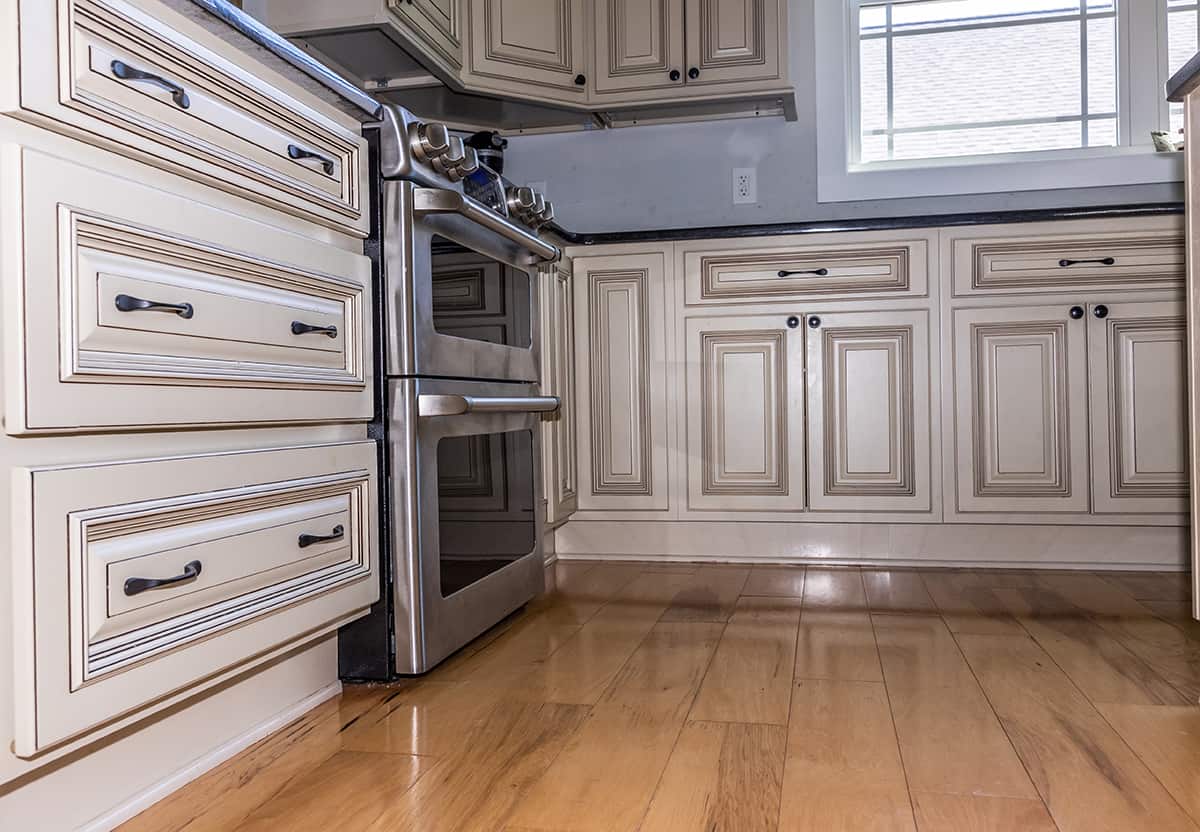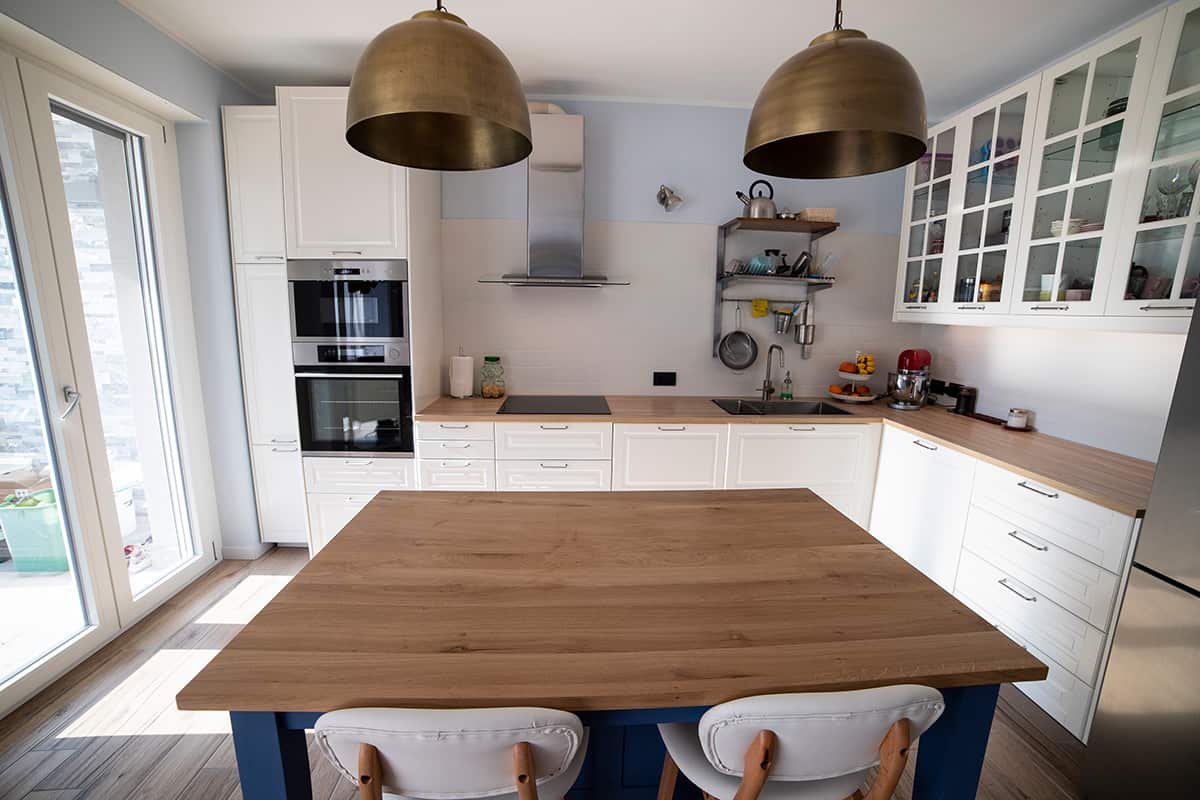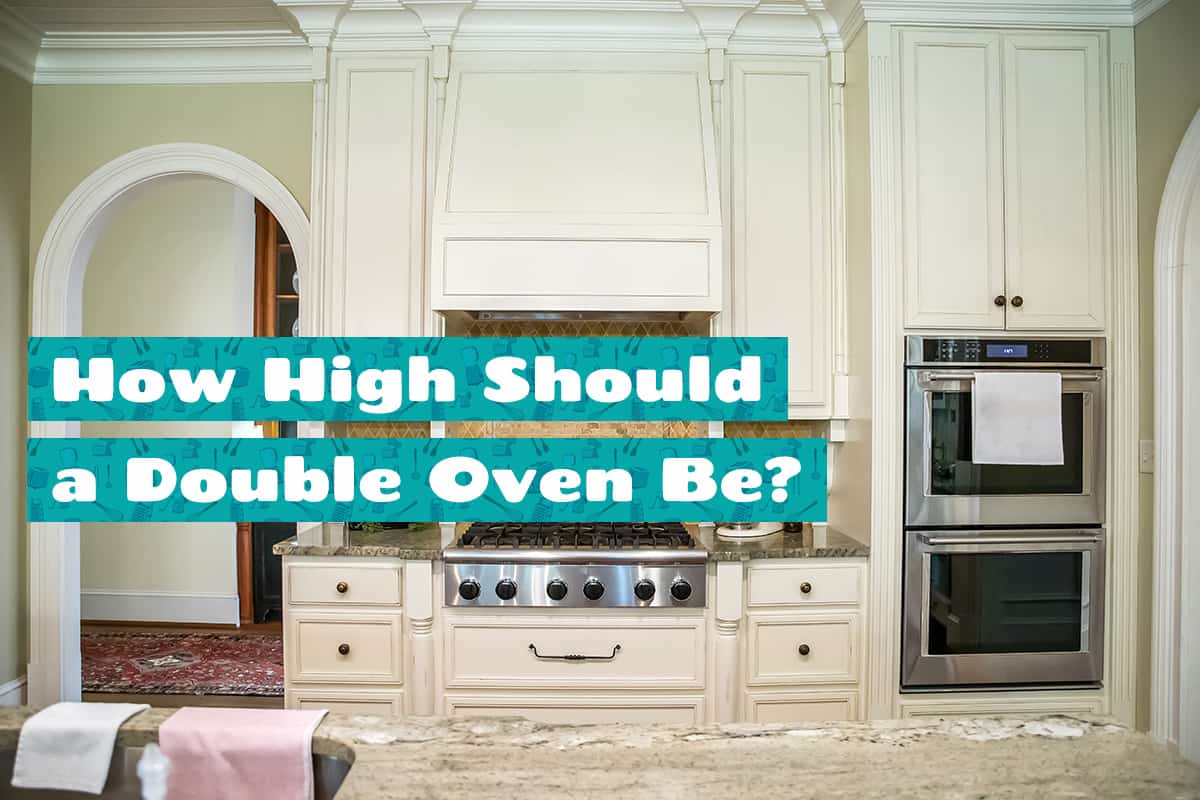Double ovens offer increased capacity and efficiency for both everyday meals and festive feasts. They come in various types and styles, with one common concern among potential owners: figuring out the optimal installation height.
While there’s no one-size-fits-all answer, most wall-mounted double ovens are typically installed at a height of 48 to 52 inches from the floor. Factors determining this range include ergonomics, kitchen design, safety, and the user’s height and reach.
This guide will explain the nuances of oven height to help you get your kitchen setup just right.
What Is a Double Oven?

Ever wished your oven could multitask like you juggling weekend chores? Enter the double oven! It’s like the superhero version of the regular oven, with two separate compartments for cooking.
A double oven is a standalone kitchen appliance with not one but two oven chambers. Want to bake a pie and roast a turkey at the same time, at different temperatures? No problem! The dual compartments allow simultaneous cooking without flavor mixing.
This appliance offers twice the cooking capacity for the price of… well, a bit more than one. The main perks? Double the oven space, flexibility in cooking multiple dishes, and energy efficiency (you don’t always have to heat up the larger chamber for a small dish).
Factors Influencing Double Oven Height
So, you’ve got your shiny new double oven and now comes the million-dollar question: Where should it live in your kitchen? The height of your double oven isn’t just about making a style statement; it’s also about ensuring that your cooking adventures are comfortable, safe, and efficient.
1. Ergonomics and User Comfort
Fancy word, simple idea: it’s all about making your oven work for you. Basically, you want the oven at a height where you’re not doing deep squats or tippy-toe stretches every time you check on your lasagna. Most people find that positioning the oven so the center aligns with their elbow height is a good rule of thumb.
2. Kitchen Design and Aesthetics
Now, while you’re flipping pancakes or stewing soup, you might as well have your kitchen looking chic. The height of your double oven can make a difference to your kitchen’s overall vibe. For instance, aligning the top of your oven with other appliances or cabinets can create a sleek, harmonized look.
3. Safety Concerns
Nobody likes to think of accidents, but hey, better safe than sorry! Especially if you’ve got kids doing their best impression of a tornado or curious pets. Positioning the oven higher might keep it out of reach of little hands and paws.
4. Type of Double Oven
Not all double ovens are made equal. Some are designed to be wall-mounted; others slide right under your countertop. Wall-mounted ones generally offer more flexibility in height adjustments. Under-counter models, however, are cozier with your kitchen island or counters. Your oven type might come with manufacturer-recommended heights.
5. Personal Preferences and Specific Needs
Sometimes it’s just about what feels right. Maybe you’ve got that one cookie sheet that fits just so, or you’re channeling your inner celebrity chef and want things just so. Or perhaps there’s a family member with specific accessibility needs.
Height Recommendations Based on Oven Type
You’ve sized up your kitchen, got your measuring tape out, and you’re ready to commit to that oven placement. But wait! Different ovens have different personality types. Well, not exactly, but they do have distinct installation guidelines.
Wall-Mounted Double Ovens
These ovens love the spotlight and are often the focal point of a kitchen. Their claim to fame is flexibility in height placement. Most homeowners find the sweet spot between 48 to 52 inches off the floor. That’s roughly chest height for an average adult.
Under-Counter Double Ovens
These are the cozy, unassuming types. They snuggle right under your countertop. While they offer a seamless look, they’re a bit more limited in height adjustments. The top edge typically aligns with your counter height, which for most standard kitchens is about 36 inches. However, the beauty of the under-counter double oven lies in its subtlety.
Freestanding Double Ovens
Freestanding double ovens are versatile, often coming with a cooktop. They stand tall and proud, usually with a height that’s preset. Most of these models range from 36 to 40 inches in height. At the same time, you might have limited wiggle room with their height, their charm lies in the fact that they’re often the heart of the kitchen.
Custom or Specialty Ovens
For those who like to stray off the beaten path, there are custom or specialty ovens. These might come with unique installation guidelines. Dive into the manufacturer’s instructions or even consult a pro.
Installation Tips and Best Practices

Installing a double oven? Sounds like a weekend DIY project, right? Before you roll up your sleeves and get down to business, let’s take a crash course in oven installation.
Pre-Installation Preparations
First things first, measure twice or risk crying over an oven that doesn’t fit. Jokes aside, you’ll want to get the dimensions of your chosen spot down to the tee. A tape measure is your new best friend. Oh, and clear the area. The last thing you need is to trip over that blender you never use. Finally, check the electrical requirements.
Pro Tips for Wall-Mounted Ovens
For those opting for a wall-mounted double oven, remember: they’re a bit heavy! It’s like trying to mount a very dense marshmallow. Enlist a buddy or two for help. Also, ensure the wall can handle the oven’s weight. And don’t forget to level it; you don’t want a lopsided cake as your first baking project.
Slide-In Success for Under-counter Ovens
If you’re cozying up with an under-counter model, make sure the space is snug but not too snug. Leave a bit of wiggle room at the back of the oven for ventilation and wires.
Freestanding Oven Freedom
These big guys are relatively straightforward. Place them where you fancy, plug them in, and you’re good to go. But remember, they might need their own dedicated circuit. Nobody likes a power trip, especially not your oven.
Tech Checks
Once your oven’s in place, give it a dry run. And by that, we mean turn it on without cooking anything. Listen for any odd sounds. If it’s humming your favorite tune, great! If it’s making a noise that sounds like a sci-fi movie, maybe revisit the instruction manual.







Leave a Reply